Solar Flats
There are probably several photos from the last two weeks worth sharing, photos that got passed over in favor of the wall-to-wall passage of 3502 and 3503. I'll get to them by and by. Here's one from today. I tried this with high-contrast gamma (which I use for focusing) and with gamma disabled (as usual) to verify that the finished image works out better when built from data that does not use the in-camera gamma adjustment.
07/18/2022. You know what I'm tired of? Missed focus. (The focus on this image is pretty much dead on.) The difference between a nice solar clip with spot on focus and one a little off is not small.
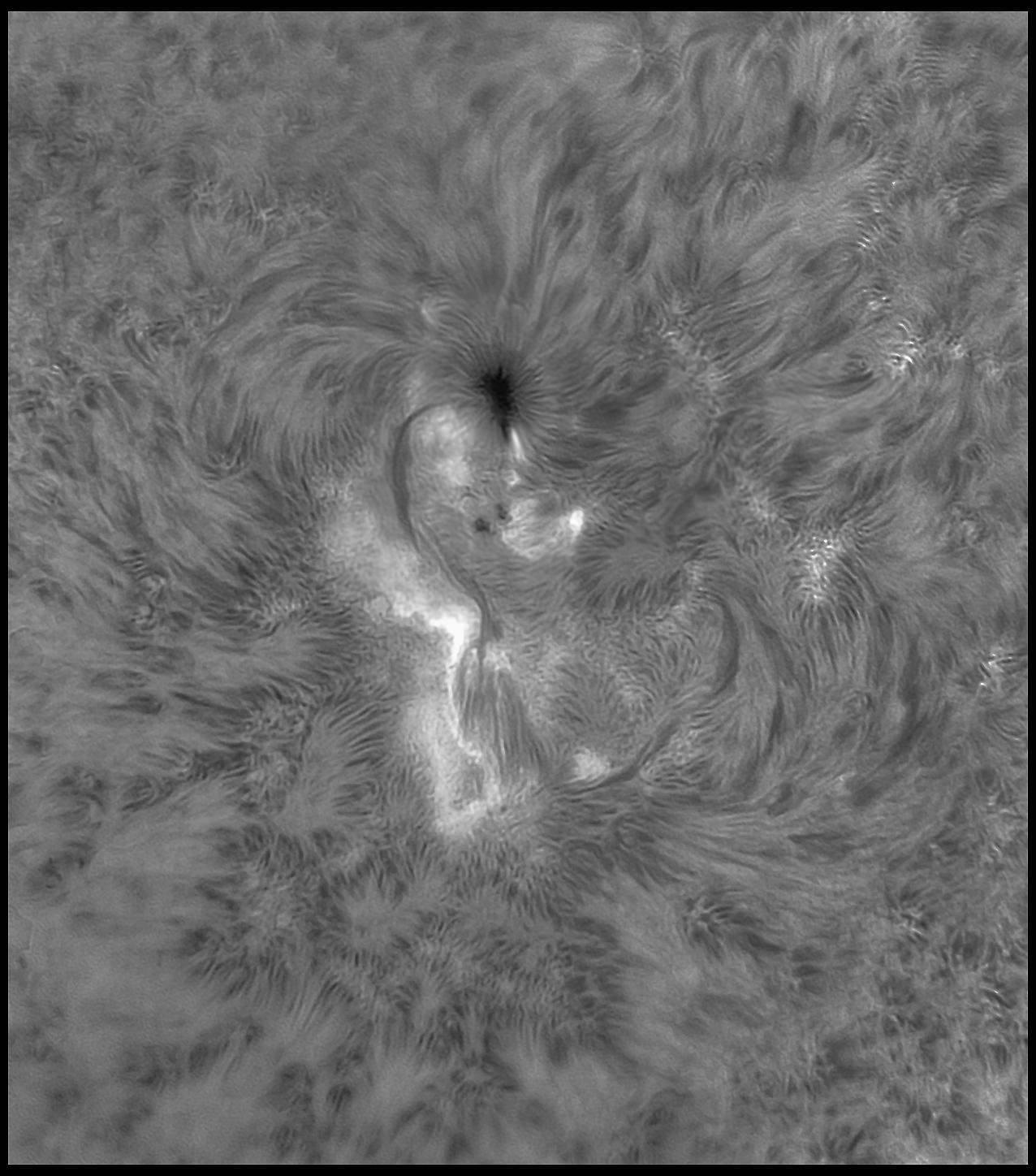
Best 1,200 of 5,000
ROI 2080x2080, centered, gamma off
Biggify at will.
So why do I miss? In part because I take solar flats by wracking the camera all the way out to the stop, capturing 50 or so defocussed flats, and then focusing again. The best focus comes from selecting gamma on, adjusting the gamma tranform for highest contrast, then lining up on some highly detailed active region and squinting at the screen while twisting the focus knob until things are as sharp as they're going to get. Then to get the best data, disable gamma and start collecting frames. But it's easy to get impatient and say "That's good enough," when it really isn't and accept marginal focus (or worse). I've been meaning to make a diffuser to use for flats. It would mean that I no longer need to crank the camera grossly out of focus and reset it. Instead, I'll be able to get it really right once and pretty well leave it alone for days at a time (except for a tiny tweak now and then, because who can resist, right?). A diffuser also means I can reframe an interesting region by rotating the camera and taking a new flat without ever touching the focus. Good deal.
Daystar makes a "Flat Cap" for this purpose. And wonder of wonders, it's not expensive, at least not for something with a Daystar label (it runs about $85 in my sizes). And they've made a YouTube video about three ways to make flats: (1) what I've been doing, (2) with an ad hoc plastic diffuser, (3) with a Flat Cap. They all work, say they. I'm going to try (2) next.
I've rigged up a diffuser using Glad Cling Wrap (not the clear stuff but the translucent, grippy kind). I've wrapped a smooth coating of that around a bit of clear packaging from the fruit & veggie counter at the grocery store. It fits the Frankenscope dewcap perfectly. Various kinds of plastic films or bags are said to work, and this looks like a good start. All I need is a clear half hour for sky trials.
Another tip from the video that is probably worth adopting: Daystar suggests averaging as many flat frames as light frames that I mean to use. It makes sense, I suppose, since otherwise a short stack of flats would inject into the finished image the noise inherent in the shorter flat stack. That's really not a lot of noise when taking short exposures at unity gain, but it's way more than in a stack of a few thouand light frames (mathematically, a stack of 3,000 frames would be expected to have 7.7x less noise than a stack of 50). I'm thinking I only need as many frames as the number of lights I intend to use, so, say, two or three thousand would be plenty for anything I've shot this year.
07/19/2022. Thus armed, I tweaked the focus and covered the objective with the Glad Wrap Flat Cap. First surprise: to get a decent histogram, exposures had to be on the order of 500 times longer. That's nine stops of extinction. So I captured only my usual 50 flats with 750ms (!) exposures. That's likely to introduce substantially more noise than the flats I've been using. But let's see how it works, how evenly the field is illuminated, etc., and go from there. I tried a full-frame capture for testing and some ROI clips for sport.
The result is not good. Some dust remains, and the curious high-frequency horizontal banding for which the 178MM is notorious is prominent (presumably introduced by the flat). Note that that banding yields to Photoshop's Dust & Scratches filter but at some cost in sharpness; Pixinsight's FFT and iFFT tools provide a better but more labor-intensive fix.
I tried removing the grip wrap and used two layers of Saran Wrap instead. Exposures came down nicely, but tall stacks of flats made with the more transparent diffuser allowed dust and other un-good aspects of the illumination at the chip to survive. Single layer. Same result. No diffusion wrap, just the plastic container. Same. Plastic bag. Same. I took a fresh defocussed flat (200 frames) just to make sure all was working as expected. Yep. For now, it's back to defocussed flats.
The extra-deep flat stack might have made a difference for the good. If you're determined to find good news and a new trick in today's experiments, maybe that. Take deeper flat stacks. And keep thinking about diffusion options. I don't understand why they didn't work.
Here's today's sun photo, made the old-fashioned way, with a defocussed flat using 200 rather than 50 frames. Click to check for differences or whatever; it will be less informative than you might wish. Try even taller flat stacks soon. And as for focus? Practice, Mister. Practice.
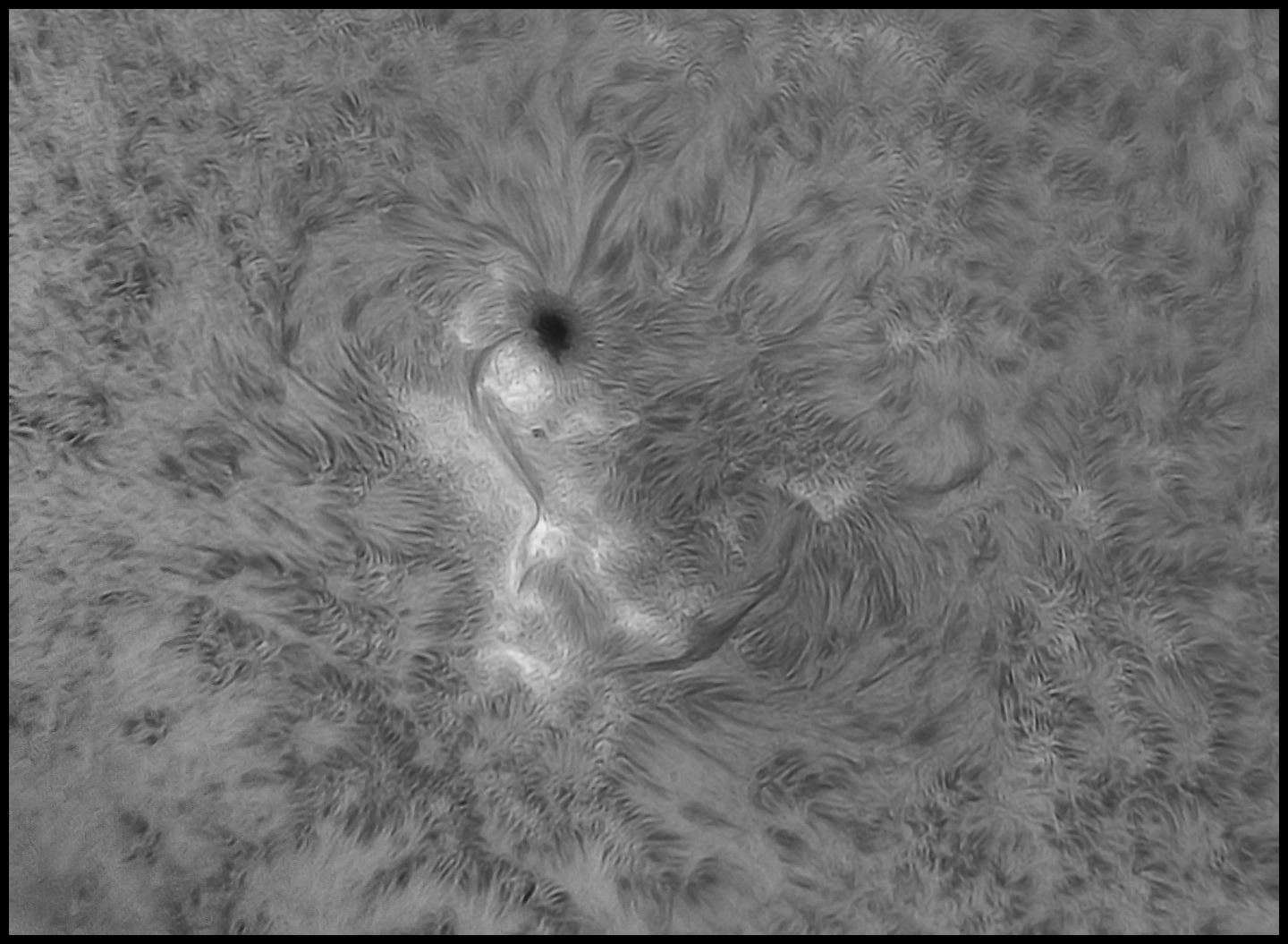
07/20/2022. An elaborate prominence showed up on the GONG patrol photos and the air was reasonably clear here, so I figured I had to take a cut at it. Some high clouds blew through and I never got a good, clean clip. Thin obscuration plays hell with solar imaging in general and with above-the-limb low-contrast features especially. I got a reasonably clean stack from a 2,000 frame clip by using all 2,000 frames and to hell with lucky imaging and the sharpest subsets. The foreground is the usual best 500 out of 2,000 thing. Make it big!
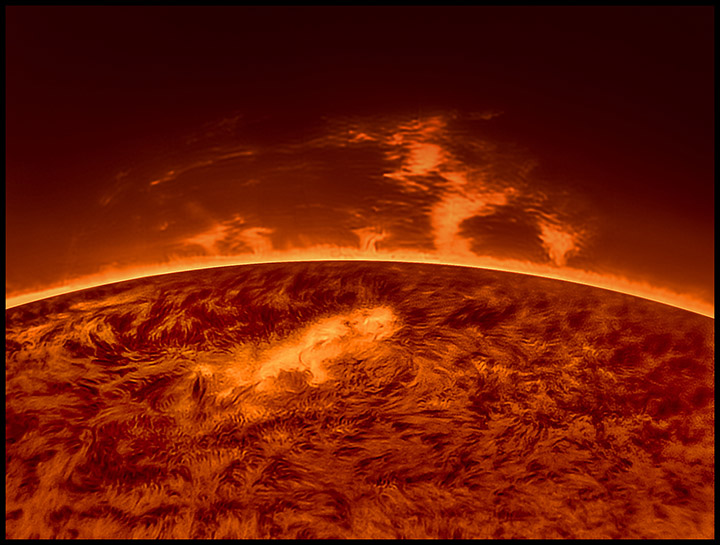
The flat is 500 frames deep.
By the way, if you try to take a filet of the best frames under variably cloudy skies you get this inconveniently mottled field. Also, the brighter left side suggests a small light leak that shows up while taking relatively long-exposures of fainter details. Put those sins together, and this is the sort of thing with which you'll contend:

Best 200 out of 1,500 under increasing, scattered clouds.
10ms per frame.
07/21/2022. More flat experiments. Today I used 1,000 frames to construct my flat. It does no harm, and it might do some good. Back to back experiments are in order, I suppose, or else I'll just standardize on the deep flat and worry about theory when I need something to help me sleep.
In looking back over these many pages, I also realized that I used to use much smaller ROIs, even quite recently, so I took 10,000 1k x 1k frames at almost 80 frames per second for old time's sake. This is what you get when you use 2,000 of those:
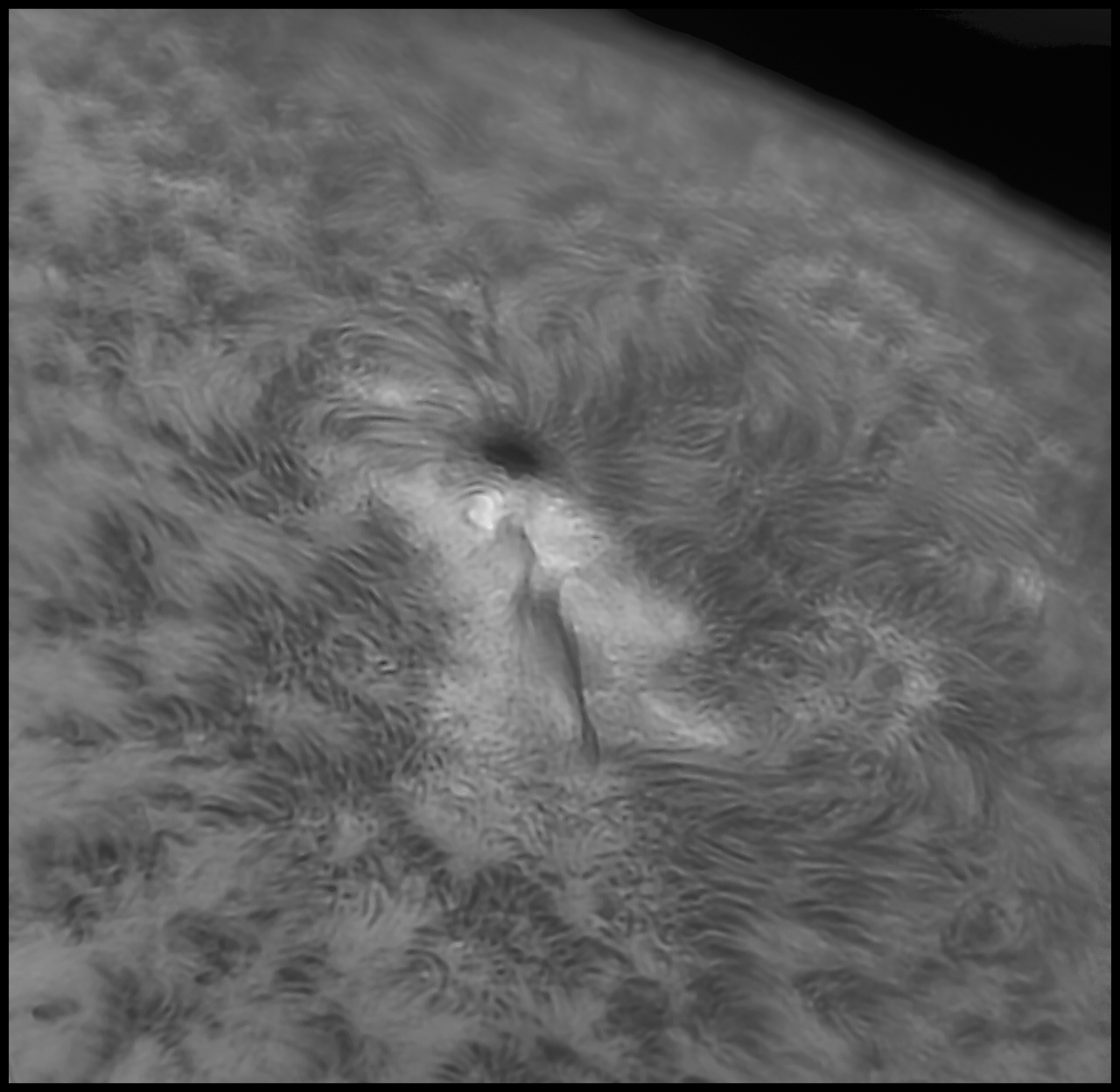
The problem with that is that it's simply not enough pixels for a reasonable web presentation, let alone anything more demanding. Make it big and you lose a lot of perceived sharpness. There's a sweet spot; old timers (raises hand...) calculated "circles of confusion" to decide what was sharp enough at what print size and what viewing distance. So, basically, within limits "more pixels" is (like "shoot on fine grain film" or "don't blow it up so big!") generally good advice.
I doubled each dimension of the ROI (to 2k x 2k) and took 4,000 frames at about 55 fps. I used 2,000 of them for this:
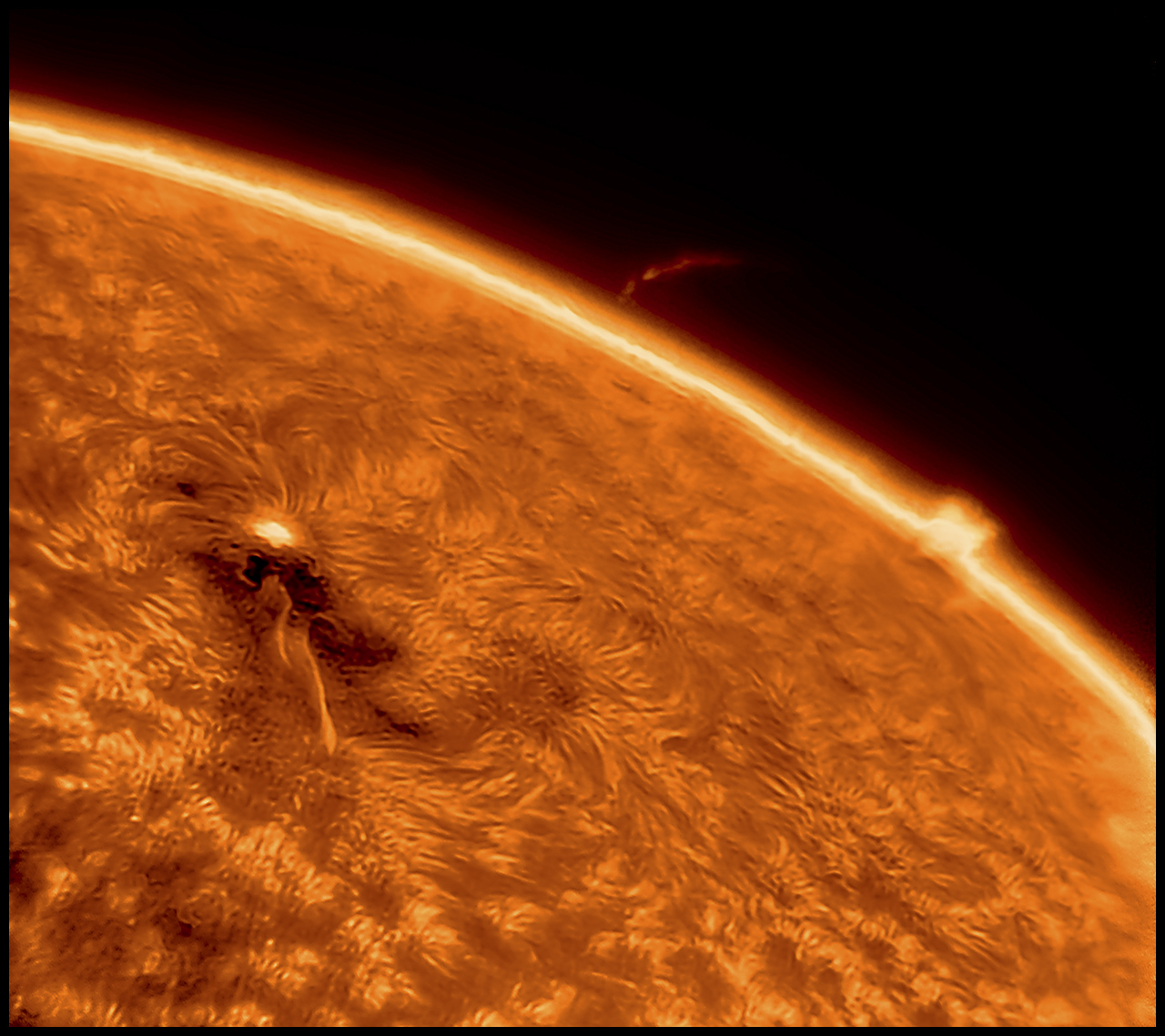
So, y'know, more is more, but enough is enough. It's all tradeoffs here.